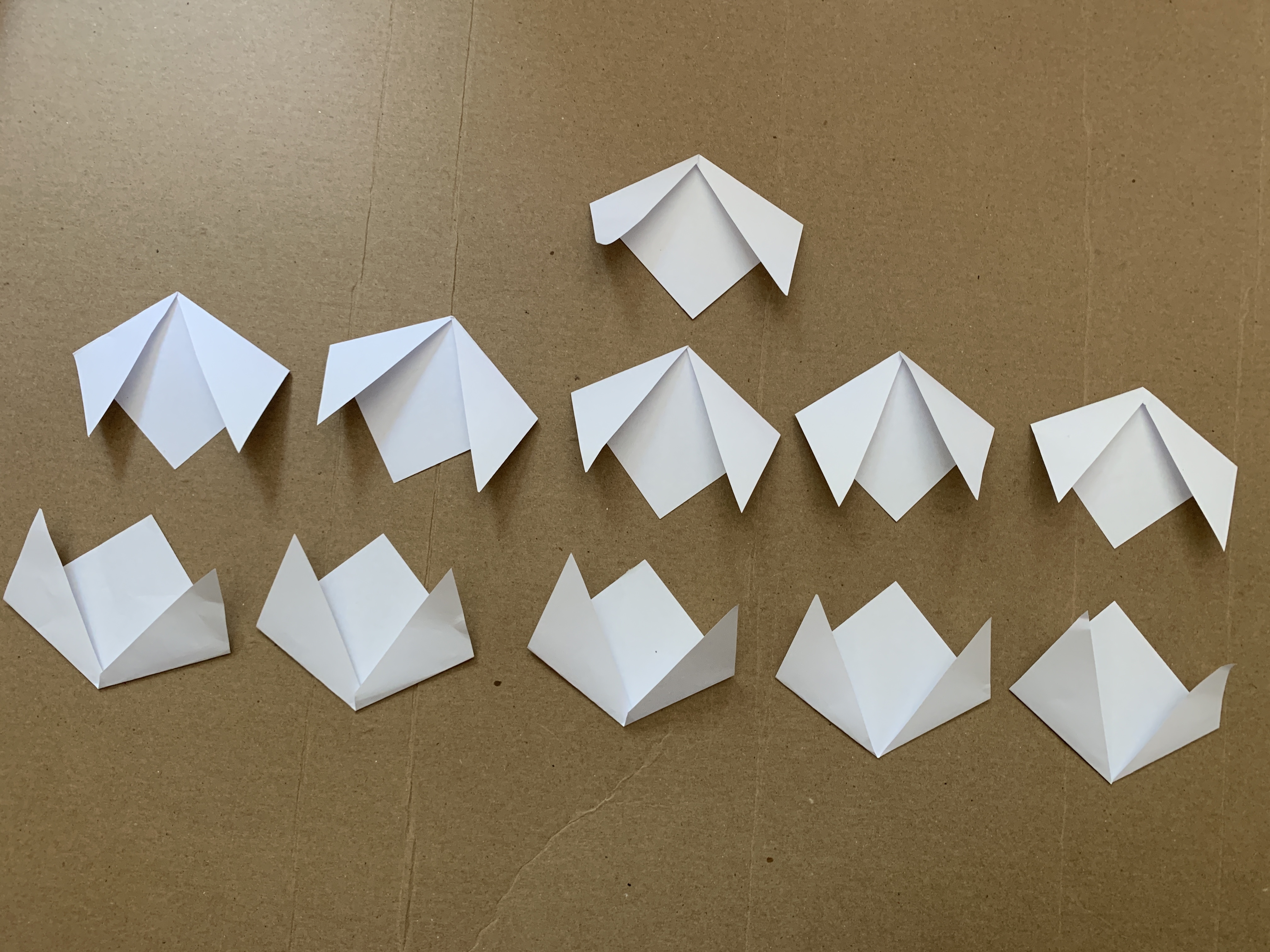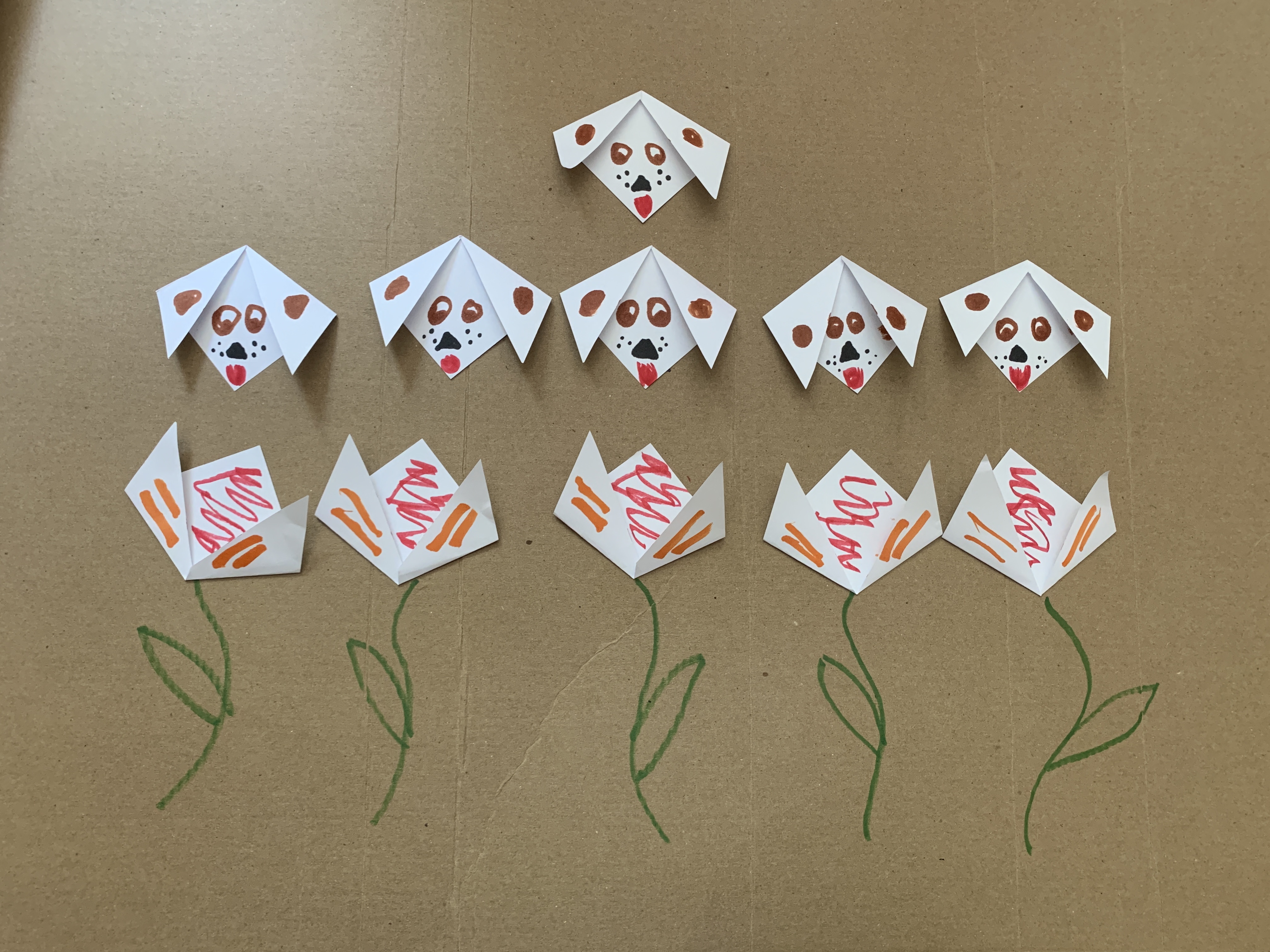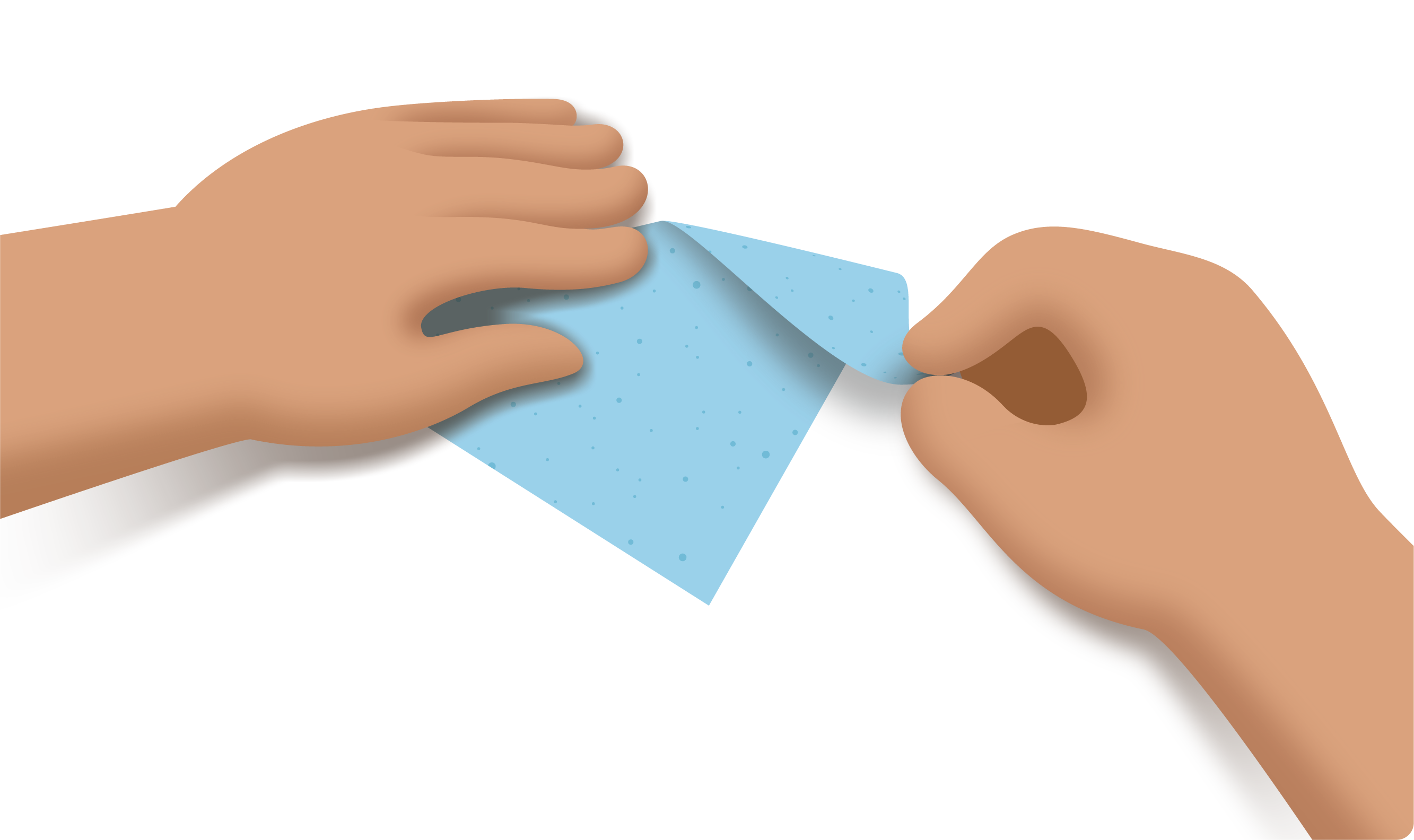Lesson 17
Puppies and Tulips (optional)
Warm-up: Notice and Wonder: Puppies and Tulips (10 minutes)
Narrative
The purpose of this warm-up is to elicit the idea that there are two different types of origami in the picture, which will be useful in a later activity when students make origami and create story problems based on what they make. While students may notice and wonder many things about the image, it is important to discuss the different groups seen in the picture and what can be counted.
Launch
- Groups of 2
- Display the image.
- “What do you notice? What do you wonder?”
- 1 minute: quiet think time
Activity
- “Discuss your thinking with your partner.”
- 1 minute: partner discussion
- Share and record responses.
Student Facing
What do you notice?
What do you wonder?

Student Response
For access, consult one of our IM Certified Partners.
Activity Synthesis
- “How many of the origami pieces are facing in one direction? How many are facing in the other?” (Five are pointing up and six are pointing down.)
Activity 1: Puppy and Tulip Stories (25 minutes)
Narrative
The purpose of this activity is for students to create and make sense of comparison statements. Students make origami puppies and tulips. Then they decide which two out of four different comparison sentence frames using “fewer” and “more” make sense for their specific number of puppies and tulips.
Students can be given time at the end of this activity to decorate and glue their origami pieces on large construction paper.
Supports accessibility for: Fine Motor Skills, Organization,Visual-Spatial Processing
Required Materials
Materials to Gather
Materials to Copy
- Origami Triangles: Puppies and Tulips
Required Preparation
- Each group of 2 needs at least 20 paper triangles.
Launch
- Groups of 2
- Give students paper triangles.
- Display the image from the student book.
- “What do you notice? What do you wonder?” (It looks like the same image from the warm up, but now they look like puppies and flowers. What else could they be?)
- Demonstrate how to make origami puppies and tulips.
- “Put your finger in the middle of the long side of the triangle and fold each corner down. Repeat for the other side.”
Activity
- “Fold as many triangles as you can in 5 minutes.”
- 5 minutes: partner work time
- “Record how many you have altogether, how many will be tulips, and how many will be puppies.”
- “Now complete the sentences that apply to your story.”
- Monitor for students who can explain which statements do and do not apply to their situation.
Student Facing

-
For each paper you fold, decide if it is a puppy or a tulip:
- Total: ____________
- Tulips: ____________
- Puppies: ____________

-
Complete the 2 sentences that apply to your story.
-
There are ______ fewer puppies than tulips.
There are _____ tulips.
How many puppies are there?
-
There are ____________ fewer tulips than puppies.
There are ____________tulips.
How many puppies are there?
-
There are ____________ more tulips than puppies.
There are ____________tulips.
How many puppies are there?
-
There are ____________ more puppies than tulips.
There are ____________ tulips.
How many puppies are there?
-
Student Response
For access, consult one of our IM Certified Partners.
Activity Synthesis
- Invite students to share the statements that apply to their situation with at least one other pair and explain why the others do not apply.
- Give students time to color their tulips and puppies and glue them down to construction paper.
Activity 2: Act it Out (15 minutes)
Narrative
The purpose of this activity is for students to solve addition and subtraction word problems by acting out the stories. Acting out gives students opportunities to make sense of a context (MP1).
In this activity, pairs of students share a story problem they worked on in the previous activity with another pair. Students use objects to act out the story, use any method that makes sense to them to solve and represent the situation, and write an equation. Some students may write an addition equation for a problem involving “more” and a subtraction equation involving “fewer,” while others write an addition or subtraction equation in both scenarios. They may also notice, regardless of the equation, the outcome is the same.
Advances: Conversing
Required Materials
Materials to Gather
Required Preparation
- Each group needs their origami stories from the previous activity.
Launch
- Groups of 4
- “Take turns reading a problem you came up with in the previous activity. Your partner group will act out the story with connecting cubes, then solve the problems. Then switch roles.”
Activity
- 10 minutes: group work time
- Monitor students who write addition and subtraction equations.
Student Facing
Group A: Read your problems to your partner group.
Group B:-
Act out and solve the problems.
Show your thinking using drawings, numbers, or words. - Write an equation to represent each story problem.
-
What do you notice about the story problems and the equations you wrote?
Switch roles.
Student Response
For access, consult one of our IM Certified Partners.
Activity Synthesis
- Invite previously identified students to share their equations.
- Invite other students to explain how the equations represent the situation.
- “What do you notice about the story problems and the equations you wrote?” (They all involve the same numbers. The answer to the problem is the same even if the equation is different.)
Lesson Synthesis
Lesson Synthesis
“Today, we made origami puppies and tulips to help us learn more about how to write and solve comparison problems.”
Display problem:
“Tyler also made puppies and tulips.
He made 2 more tulips than puppies.
He made 7 tulips.”
“What equations can we write to represent this situation?” (\(2+5=7\) and \(7-2=5\))
“Explain to your partner how both of these equations represent the situation.”